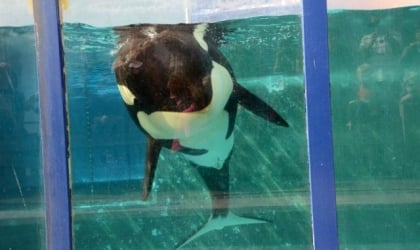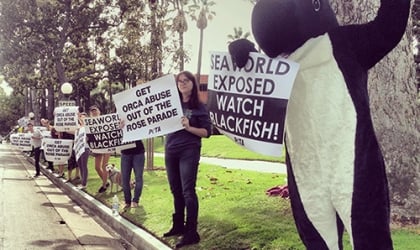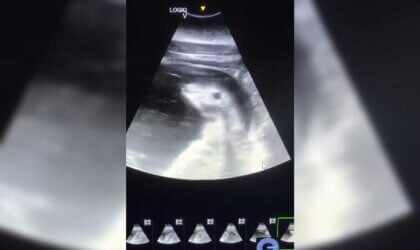The life of Corky the orca has not been a real one, in a sense. Instead, she’s endured decades of cruel confinement and exploitation—a living nightmare. Comparing how she’s had to exist in tiny tanks—mostly at SeaWorld San Diego—with how she could’ve lived in nature can offer a compassionate perspective on her plight. Since December 11 is the anniversary of Corky’s capture, PETA hopes it will lead everyone to take action and help spare her and other marine mammals used for entertainment. Every orca—and every other animal—is someone, and no humans should have the right to rob a living, feeling being like Corky of their natural liberty.

Comparing the Exploited Life of Corky the Orca With What Could’ve Been
Comparing what Corky’s life has been with what it could’ve been if she’d never been captured creates a striking contrast. Please consider the following timeline of troubling events.
- 1969: Speciesist humans violently separated Corky from her family near the coast of British Columbia and sold her into captivity. Instead, Corky could’ve stayed with her mother—a bond that many wild orcas share for life. This opportunity was stolen from Corky—who never met her younger brother and sister, Fife and Ripple.
- 1977–1987: For nearly a decade, workers at the now-defunct Marineland of the Pacific in California used Corky as a breeding machine—breeding her with her own cousin six times. She was the first orca to give birth in captivity in 1977, but her calf died of pneumonia after only 11 days. In 1987, Corky was transferred to SeaWorld San Diego, where her last pregnancy ended in a miscarriage. Workers found her dead baby at the bottom of a tank. None of her seven babies survived longer than 47 days. Instead, Corky could’ve chosen her own mate and learned mothering skills from her pod. In the ocean, her babies may have survived until adulthood. She wouldn’t have had to watch humans take her dead babies from her.

- 1989: Perhaps missing her own calves, Corky spent a lot of time staying close to a young female orca named Orkid when they shared a tank at SeaWorld. But this situation may have led to jealousy: In August, Orkid’s mother, Kandu, attacked Corky. Forcefully charging Corky, Kandu broke her own jaw, severing arteries in her head. It took 45 minutes for her to die as Orkid helplessly watched. Instead, Corky wouldn’t have been forced to endure an unnatural living situation that led to conflict and death.
- 2021 and 2022: In 2021, PETA received reports that SeaWorld San Diego had placed all 10 orcas it confined together in one area, despite a documented history of aggression among some of them, which led the now deceased orca Amaya to chase and injure Corky. A year later, eyewitness video footage showed an attack among orcas at the park, resulting in a serious wound to an orca believed to be Corky. Instead, Corky likely would never have been attacked in the ocean, as attacks of this kind are rare in wild orca populations. She would’ve been able to escape attacks in order to avoid injury if she weren’t trapped in tiny tanks with other frustrated orcas.
- Now: Corky has lived in tiny tanks for 54 years, with trainers forcing her to perform day in and day out. She still has little to do but swim in endless circles. Instead, she could’ve remained in the ocean, swimming up to 150 miles per day with her family. Corky would’ve been free to live as she chose and would’ve never had to learn pointless tricks in exchange for dead fish.
How PETA’s Fighting for Corky the Orca and What Still Could Be
PETA has taken many actions as part of our long campaign for Corky’s release into a seaside sanctuary. From working with celebrities like Pamela Anderson and Christopher von Uckermann to shareholder activism and even a groundbreaking constitutional lawsuit on her behalf, PETA has never stopped fighting for Corky.

A team of experts has been working to build a seaside sanctuary in Corky’s home waters, where she could finally be returned to the area of the ocean where she belongs. If released into such a sanctuary, Corky could finally communicate with her own biological siblings, Fife and Ripple. She could feel flowing currents, dive deep into the water, and have some semblance of the natural life that humans have denied her for so long. But for that to happen, SeaWorld needs to act now and immediately set in place a firm and rapid plan to move her into a seaside sanctuary.
Take Action
Urge SeaWorld to send Corky to a seaside sanctuary, and never visit a marine abusement park.




